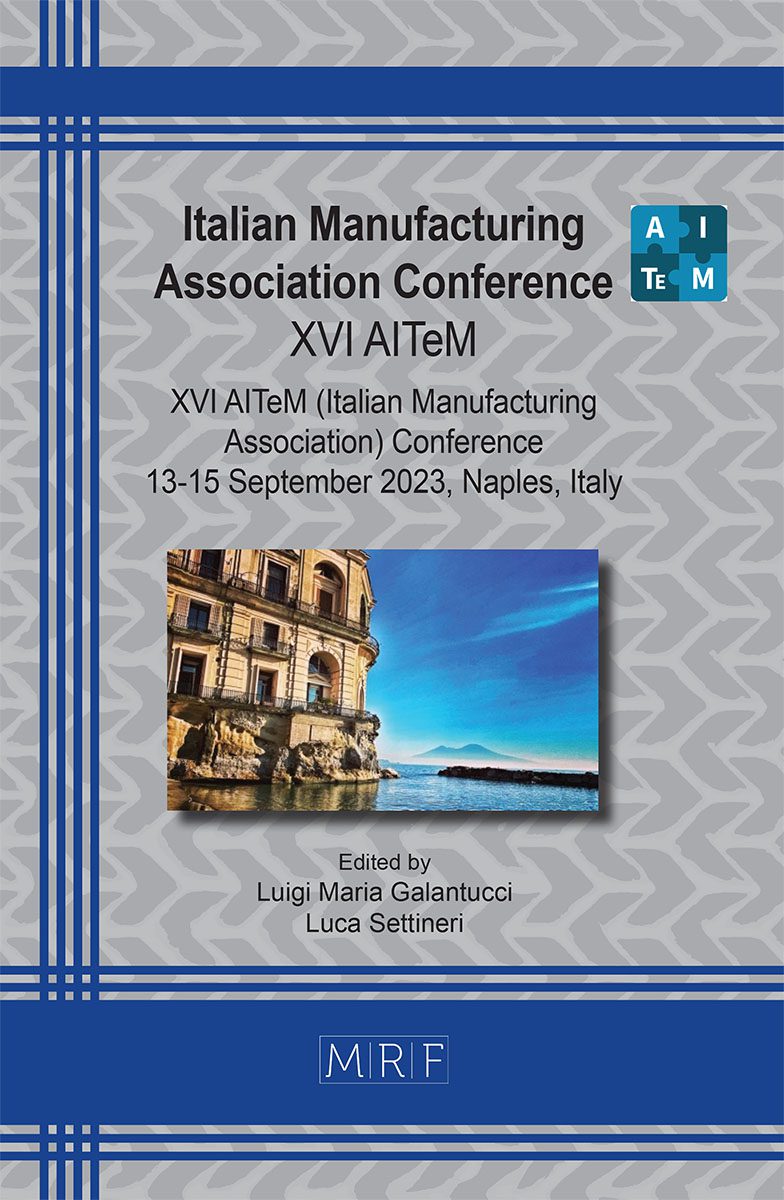Study of autoclave process to manufacture thermoplastic composites constituted by PP/flax fibers
Gianluca Parodo, Luca Sorrentino, Sandro Turchetta
download PDFAbstract. Autoclave processes are widely used from industries that produce thermoset polymer composite parts. However, these materials show sustainability issues as they are non-recyclable and produced by energy-intensive processes. The use of thermoplastic matrices reinforced with natural fibers can solve these problems; however the optimal use of this material is linked to the knowledge of the forming parameters. In this work, starting from semipreg sheets, the autoclave forming process for parts in flax woven and polypropylene is studied and developed: it represents a fundamental step to develop the use of these new eco-friendly materials starting from the well-established industrial knowledge, not only in terms of environmental sustainability, but also economic and social sustainability. First, working temperatures were determined by DSC and TGA; while optimal forming pressure were determined by ILSS tests.
Keywords
Thermoplastic Composites, Natural Fibers, Thermoforming, Process Parameters, Experimental Tests
Published online 9/5/2023, 8 pages
Copyright © 2023 by the author(s)
Published under license by Materials Research Forum LLC., Millersville PA, USA
Citation: Gianluca Parodo, Luca Sorrentino, Sandro Turchetta, Study of autoclave process to manufacture thermoplastic composites constituted by PP/flax fibers, Materials Research Proceedings, Vol. 35, pp 385-392, 2023
DOI: https://doi.org/10.21741/9781644902714-46
The article was published as article 46 of the book Italian Manufacturing Association Conference
![]() Content from this work may be used under the terms of the Creative Commons Attribution 3.0 license. Any further distribution of this work must maintain attribution to the author(s) and the title of the work, journal citation and DOI.
Content from this work may be used under the terms of the Creative Commons Attribution 3.0 license. Any further distribution of this work must maintain attribution to the author(s) and the title of the work, journal citation and DOI.
References
[1] A. Baker, S. Dutton, D. Kelly, Composite Materials for Aircraft Structures, AIAA; 2nd edition, 2004.
[2] S.A. Pradeep, R.K. Iyer, H. Kazan, S. Pilla, Automotive Applications of Plastics: Past, Present, and Future, Second Edi, Elsevier Inc., 2017. https://doi.org/10.1016/B978-0-323-39040-8.00031-6
[3] F. Rubino, A. Nisticò, F. Tucci, P. Carlone, Marine application of fiber reinforced composites: A review, J. Mar. Sci. Eng. 8 (2020). https://doi.org/10.3390/JMSE8010026
[4] S. V Hoa, Principles of the Manufacturing of Composite Materials, DEStech Publications, Inc., 2009.
[5] M. Akter, M.H. Uddin, I.S. Tania, Biocomposites based on natural fibers and polymers: A review on properties and potential applications, J. Reinf. Plast. Compos. 41 (2022) 705–742. https://doi.org/10.1177/07316844211070609
[6] D.U. Shah, Developing plant fibre composites for structural applications by optimising composite parameters: a critical review, J. Mater. Sci. 48 (2013) 6083–6107. https://doi.org/10.1007/s10853-013-7458-7
[7] L. Sorrentino, S. Turchetta, G. Parodo, R. Papa, E. Toto, M.G. Santonicola, S. Laurenzi, RIFT Process Analysis for the Production of Green Composites in Flax Fibers and Bio-Based Epoxy Resin, Materials (Basel). 15 (2022) 8173. https://doi.org/10.3390/ma15228173
[8] L. Boccarusso, D. De Fazio, M. Durante, Production of PP Composites Reinforced with Flax and Hemp Woven Mesh Fabrics via Compression Molding, Inventions. 7 (2021) 5. https://doi.org/10.3390/inventions7010005
[9] R.C. Adams, S. Advani, D.E. Alman, ASM Handbook, 2001. https://doi.org/10.1016/S0026-0576(03)90166-8
[10] A. Stamopoulos, A. Di Ilio, Numerical and experimental analysis of the thermoforming process parameters of semi-spherical glass fibre thermoplastic parts, Procedia CIRP. 99 (2021) 420–425. https://doi.org/10.1016/j.procir.2021.03.060
[11] S. Iwan, F. Althammer, S. Mueller, J. Troeltzsch, L. Kroll, Simulating the Forming of Thermoplastic, Fibre Reinforced Plastics – Demonstrated for a Side Impact Protection Beam, J. King Mongkut’s Univ. Technol. North Bangkok. (2017). https://doi.org/10.14416/j.ijast.2017.05.006
[12] L. Huang, B. Yan, L. Yan, Q. Xu, H. Tan, B. Kasal, Reinforced concrete beams strengthened with externally bonded natural flax FRP plates, Compos. Part B Eng. 91 (2016) 569–578. https://doi.org/10.1016/j.compositesb.2016.02.014
[13] O. Iordache, Industry and Society, in: Stud. Syst. Decis. Control, Springer Science and Business Media Deutschland GmbH, 2023: pp. 159–176. https://doi.org/10.1007/978-3-031-07980-1_8































